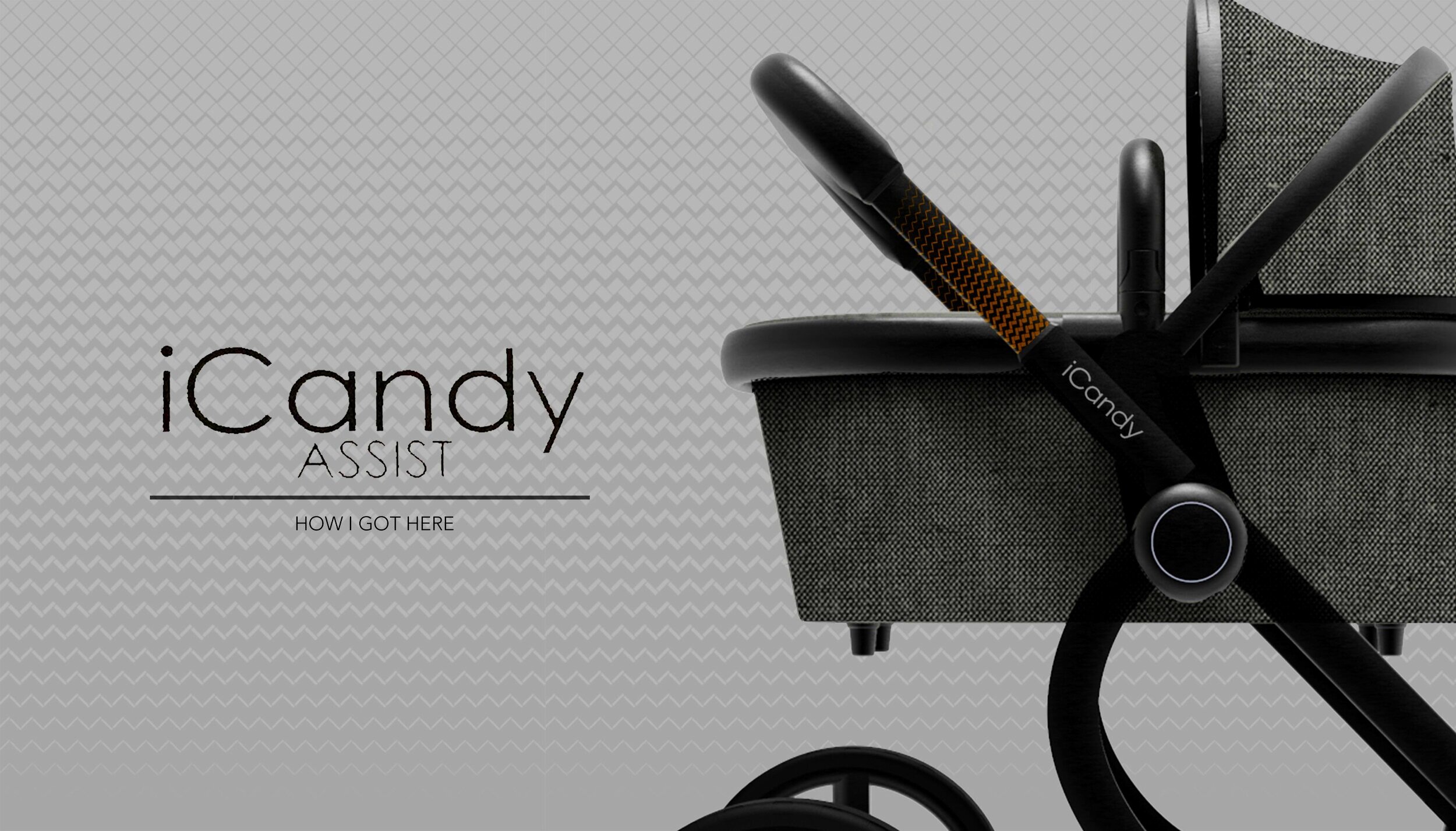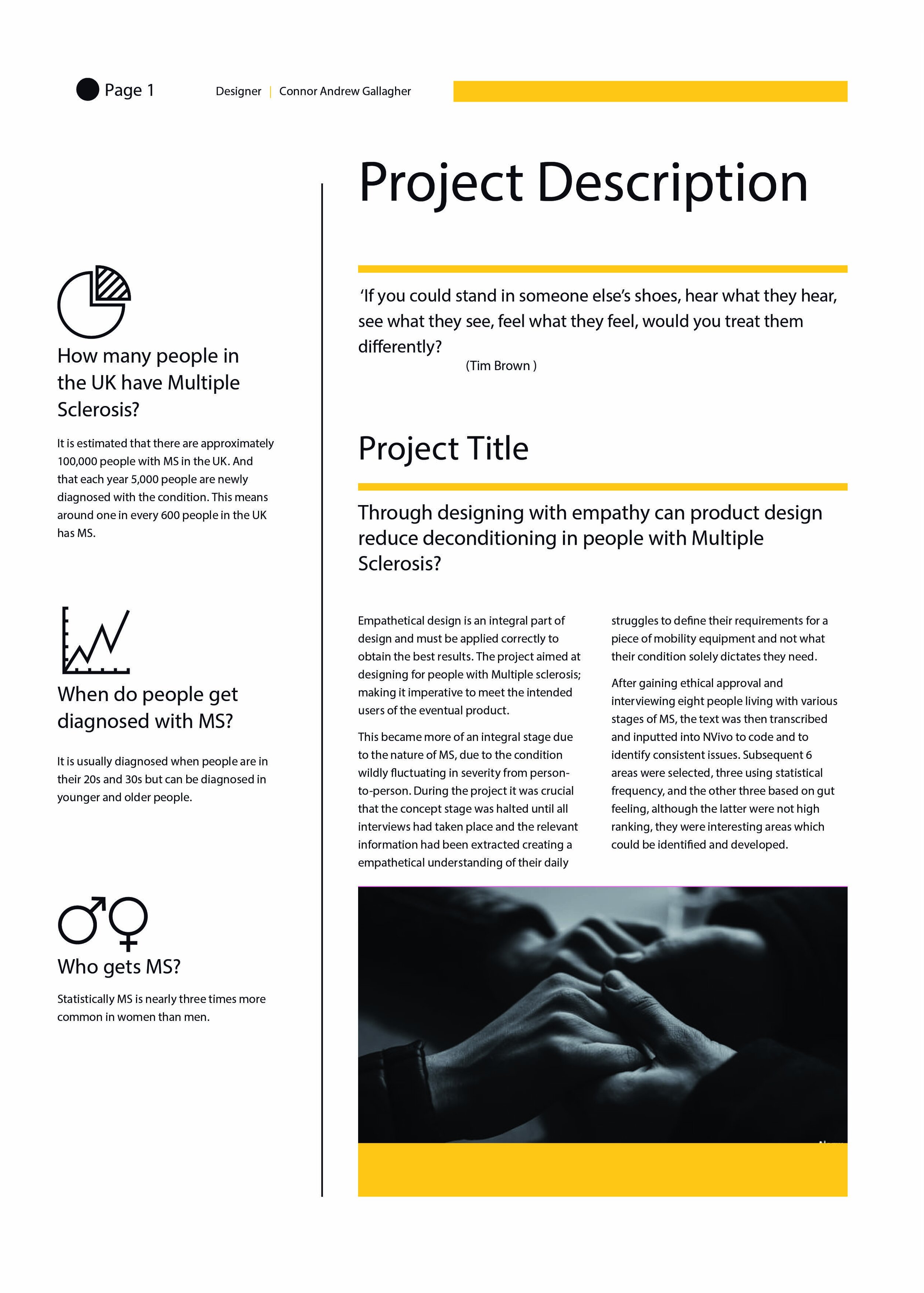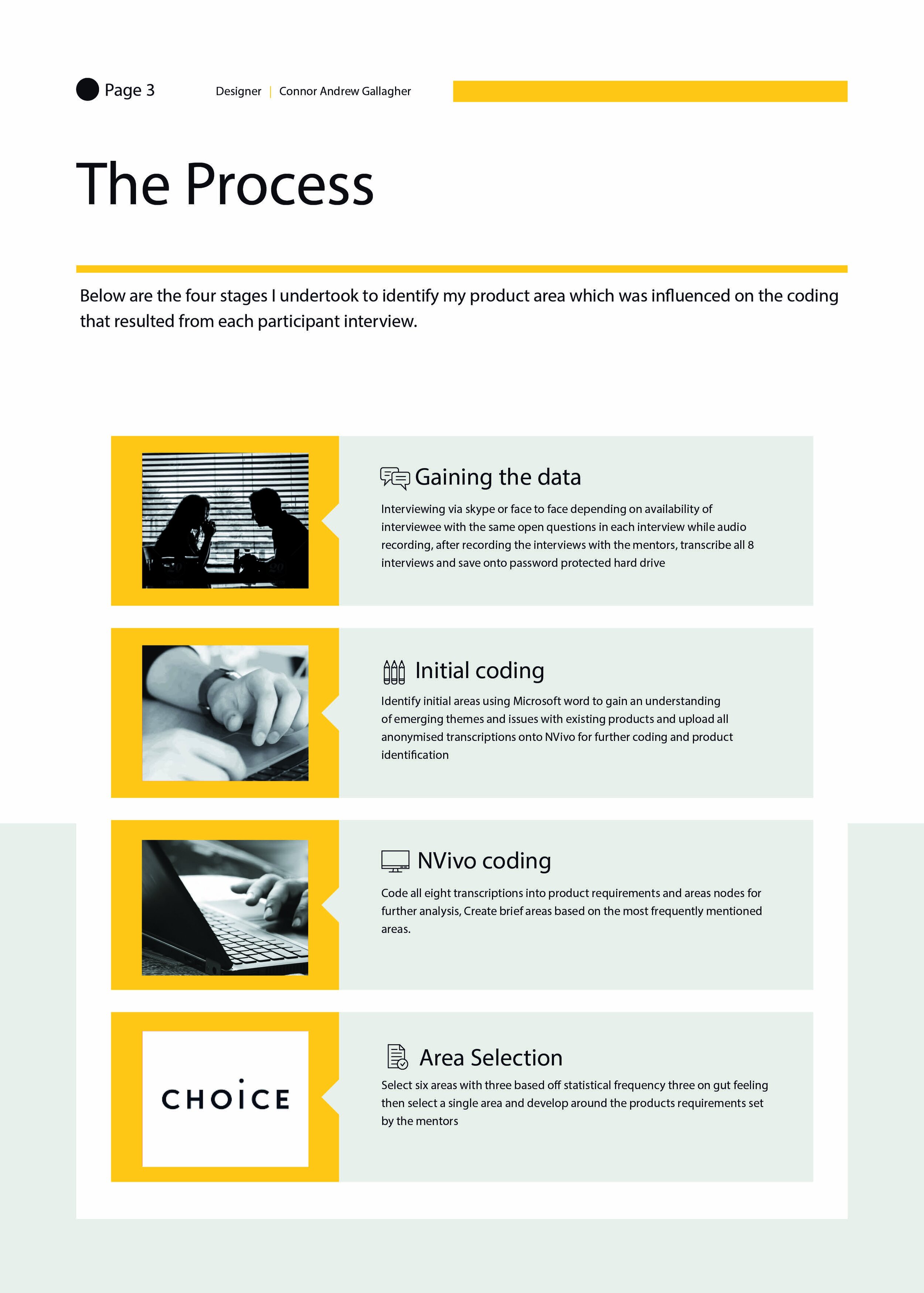
How I got here
Investigate.
It all begins with an idea. The first idea may not be the best, but it needs investigating regardless. The process to developing a product as a product designer is a fine line between structure and spontaneity; you need to be able to investigate an area in detail either collected qualitative or quantitative data and have the ability to identify when you have reached your saturation to move on to the next phase.
Analyse.
Once you have gathered your data and hit the saturation of data, you need to analyse it from two fronts. The first is to analyse it statistically, gather the main data and look at it impartially as a statistical fact. The second is to identify trends using your gut feeling as a designer. If the two begin to meld together, you know that you are going in the right direction.
Apply.
Once you have gathered your information, identified the trends you can then begin to apply what you have learnt to your design process. This is where the fun begins and can create products that not only aesthetically look pleasing but also have a strong foundation to develop a functional product that has a place and need in the market.
Project Description
Through designing with empathy, can product design reduce deconditioning in in people with Multiple Sclerosis?
The project was based around the whole process of understanding my users through empathetic design and statistical analysis to identify common, consistent issues from a broad range of condition severity in people living with Multiple Sclerosis.
Key Research
The project was structured around three main key areas of research these were:
A journal that concluded that 25% of mothers would suffer a relapse after giving birth. However, the paper only included major relapses, meaning that the percentage could be much higher if including minor to moderate relapses.
A journal identified that in their systematic review that their needs to be more research and development for assistive equipment for people living with Multiple Sclerosis.
The four stages of empathy journal was the basis for my research and interview process with the face-to-face interviews of the people living with Multiple Sclerosis.
The Process
To the right are the four stages I went through to identify my product area. These areas were later influenced by the coding that resulted from each participant interview.
The Results
Below are the six key findings of the research process. Though there seems to be a lack of conclusions, these areas are massive and can be further developed and refined into their own subcategories.
Key Outcomes
To the right are the following six areas: three using statistical frequency, and the other three based on gut feeling. Although the latter was not high ranking, the were interesting areas which could be identified and developed.
Project Selection
To the right are the three selected areas of interest. Some of the areas can be overlapped into a single product thought it is crucial at this point to keep the product aims refined and straightforward to one central area.
Selected Product
At this point in the process, I had identified the product area and the common constant issues. These were structured around the use of semi-structured interviews, coding using NVivo and using my gut feeling to identify and set out what my product features would be. These are:
Push Assist -
This feature aims to subtly assist the parent in pushing the pram up a gradient and increasing their walking distance when pushing their child.
The adaptability of the pram frame -
The pram is to be designed to be a structured walker that can be used later in life when the users' condition deteriorates; this will also offer support when pushing the child as their condition fluctuates throughout the day.
Blend In -
It became quickly apparent that most people I interviewed with Multiple Sclerosis avoided using their assistive devices as they made them look disabled. However, once they began to use the equipment, they realised the benefit. This is the key aim of the design, to create a pram that offers the support without showcasing that the user is receiving any.
Justification
Throughout the project, I needed to create a product that had a purpose and used in the lives of the intended users. Though this is a common aim for any product, there seemed especially in the case for people living with Multiple Sclerosis consistently found that any product designed for them never really hit the mark and always had a downside to using it. So before I finalised a design.
I checked my research, my data and stood back to look at the bigger picture, concluding that the pram could not only benefit the MS community but for others living with fatigue in a wide variety of conditions.
The iCandy ASSIST
To the right is the iCandy ASSIST.
Designed to fit in with the influential British pram brand iCandy. It was essential to the people living with MS that the product could blend in and not highlight their disability.
The pram is designed to be sold among other prams in showrooms such as Mothercare, changing the buying dynamic of someone buying a disabled product. In a way, you are normalising the idea of accepting to using a piece of assistive equipment, without feeling like you are doing so out of your normal buying routine.
iCandy ASSIST
Throughout the design, the branding is placed subtly like the iCandy product range, creating the illusion that the pram is like any other in the shops.
Fitted with a range of subtle assistive features, the iCandy ASSIST was initially designed for people living with Multiple Sclerosis; however, like most technology designed for the disabled, the non-disabled parents can benefit.

EMPATHY IS THE DRIVING FORCE OF DESIGN
If you would like to view the final outcome of the project please follow the link below
Or
Return to home









